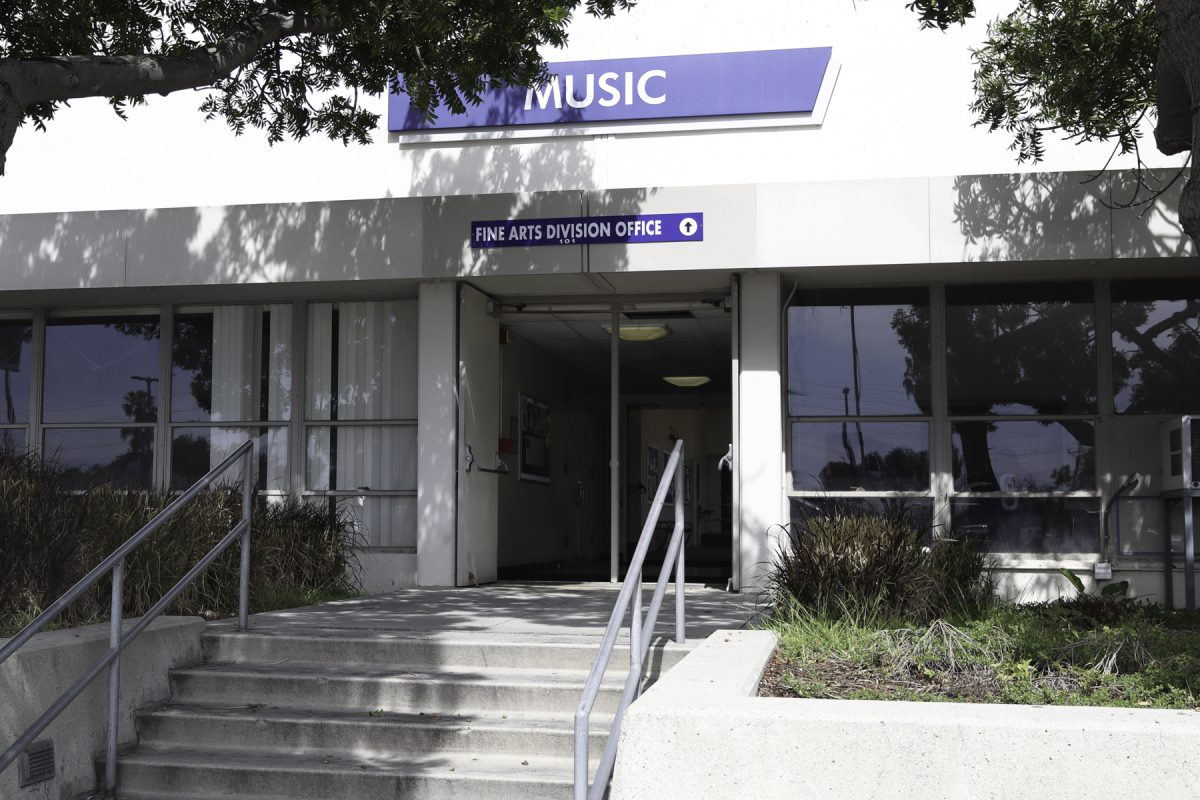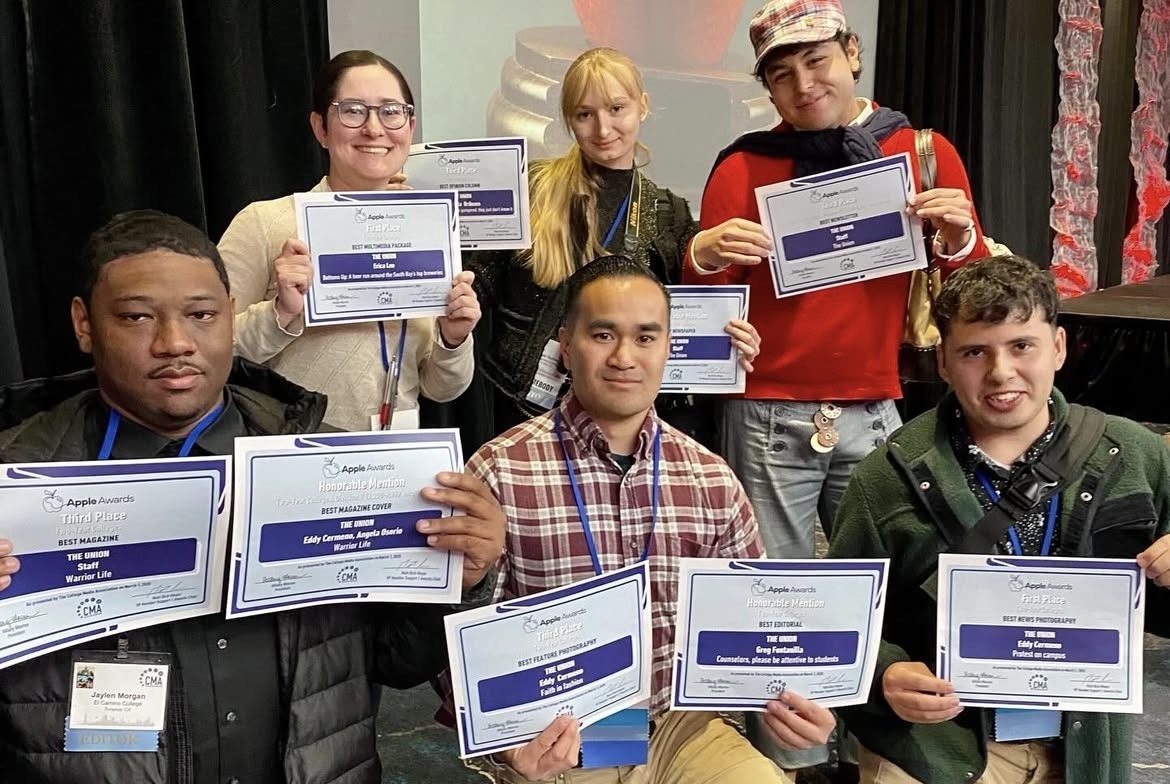When Clay Grant woke up, he had the feeling that something was off.
Grant woke up with a feeling of brain fog, and decided to go outside to get fresh air, thinking he was just feeling cramped in his room, as he was feeling fine the night before.
However, he realized something was wrong after he went outside, though he couldn’t understand what it was.
Grant’s sister called an ambulance, and after being told by paramedics his vitals were normal and that he was fine, Grant insisted that something was wrong.
Grant was taken to the hospital to better understand his condition, and he was told that he had a stroke, and had to have emergency treatment.
After the stroke, Grant suffered from aphasia, a language disorder that affects the ability to communicate.
“My ability to try to communicate was diminished,” Grant said. “The only thing I could say was yes and no.”

When Grant returned to El Camino for the fall 2021 semester, he discovered the Special Resource Center.
“I feel like it’s a second home, I feel accepted when I go there, because every time I go there, every single person tried their best to get me to my finish point, and that is to graduate, so every single person in their own special field, they push me to do my best, and that’s the only thing that anybody could tell somebody to do their best,” Grant said.
He is one of several students who enrolled in the Special Resource Center after the COVID-19 pandemic.
El Camino College’s SRC had the largest enrollment increase since the COVID-19 pandemic in the 2023 to 2024 academic year, increasing 11.52% from the 2022 to 2023 academic year, according to the California Community Colleges Chancellor’s Data Mart.
The SRC is a support program at ECC that provides equitable accommodations to students with disabilities to help them succeed, from extra time to work on tests to audio recording programs to help with note taking.
This increase comes after a six-year decline, having enrollment of under 1,700 students since 2018.
The increase is also the highest among disability support programs across four community colleges in Southern California that The Union reviewed, compared with a 26.13% decrease at Fullerton College, a 1.58% decrease at Orange Coast College and a 4.47% increase at Santa Monica College.
However, enrollment in the SRC has not reached pre-pandemic levels even after the increase.
Nathalie Lallie, the coordinator of the Center for Students with Disabilities at SMC, suggests that the reason for the higher enrollment is because of an increase of students dealing with mental health issues and that those issues were aggravated by the pandemic.
Edward Roth, the director of Disability Support Services at Fullerton College, agrees with Lallie, saying it’s a big factor.
“Mental health, it is certainly a big big factor, ‘cause we find that so many of our students have maybe a primary disability, and then almost always it’s accompanied by a mental health secondary disability as well,” Roth said.
The Union made numerous attempts to reach SRC’s Director Gary Greco, but he could not be reached for comment.
The program was created by Steve R. Fasteau, who was an advocate for students with disabilities. Fasteau developed the SRC in 1972, which was initially a program that was a part of Educational Services, according to the Warwhoop newspaper’s first issue in Volume 27.
The SRC also allows opportunities for students to work in the program.
Lynda Andrade, a 24-year-old technology and machine engineering major, had started working at the High Tech Center earlier this semester.
“I am a person that really likes to help people, and I really like the philosophy that all these departments have,” Andrade said.
The SRC is one of several different names for disability programs in community colleges, as the name varies by school.
These disability programs weren’t the only ones having an increase of enrollment post-pandemic.
The Department of Rehabilitation, a government program that works with employers to help people with disabilities find employment, had similar increases post-pandemic.
“Before COVID, our numbers were closer to 100,000, so we have been, in the last few years, seen that number kind of move from 100,000 people served a year to closer to 150,000,” Kim Rutledge, the deputy director of the Office of Legislation and Communications for the DOR said.
Rutledge said the increase is due to the more opportunities being available for people with disabilities to work.
“I think that the pandemic kind of opened up opportunities for work for people with disabilities in different ways,” Rutledge said. “I think that telework became more common, having certain flexibilities, became more common, and I think in some ways, it actually increased opportunities for people with disabilities.”











![Physics and astronomy professor Susan Stolovy presents astronomical news and updates to attendees at the first planetarium show of the semester at El Camino College on Friday, March 28. Prior to becoming a professor at ECC, Stolovy completed her doctorate in physics and worked as an astrophysicist for NASA and the California Institute of Technology on spacecraft missions. "[I'm] still very tuned into what's going on in the world of research as well, and I hope to bring a little bit of my experience into the classroom," Stolovy said. (Nikki Yunker | The Union)](https://eccunion.com/wp-content/uploads/2025/03/planetarium-Made-with-Clipchamp-3-frame-at-0m28s-1200x675.jpg)









